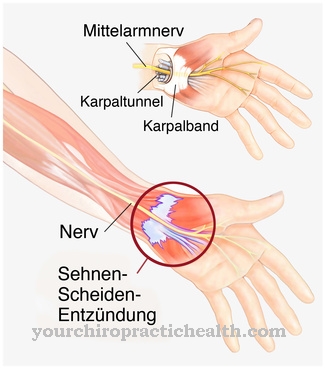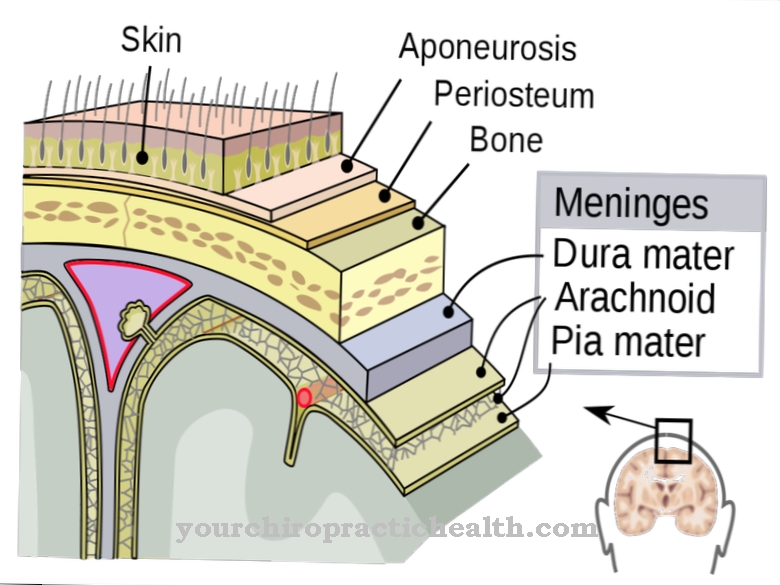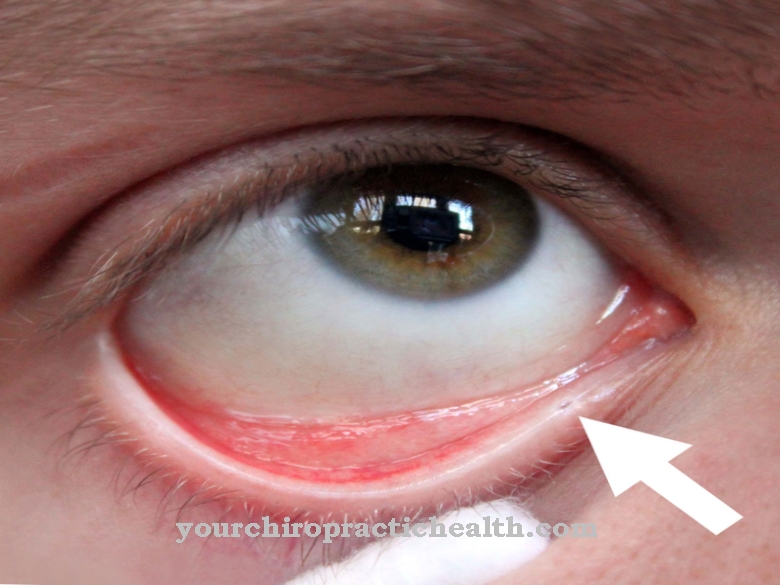As Cones the photoreceptors on the retina of the eye that are responsible for color and sharp vision. They are strongly concentrated in the yellow spot, the area of colored and at the same time sharpest vision. Humans have three different types of cones, each of which has its maximum sensitivity in the blue, green and red frequency range of light.
What are the cones?
The zone of sharpest vision is concentrated in the human retina in the yellow spot (fovea centralis) with a diameter of about 1.5 mm. At the same time, color vision is also located in the fovea centralis. The yellow spot is centrally located in the visual axis of the eye for "straight looking" and is equipped with approx. 140,000 color photoreceptors per square mm. These are so-called L, M and S cones, which have their highest light sensitivity in the yellow-green, green and blue-violet range.
The L-cones have their maximum sensitivity of 563 nanometers in the yellow-green area, but also take over the red area, so that they are usually referred to as red receptors. In the innermost area of the fovea centralis, the foveola, which is only about 0.33 mm in diameter, only M and L cones are represented. In total, there are about 6 million color receptors (cones) on the retina.
In addition to the cones, the retina is mainly equipped with around 120 million other photoreceptors, the so-called rods, outside the yellow spot. They are constructed similarly to the cones, but much more sensitive to light and can only differentiate between light and dark tones. They also react very sensitively to moving objects in the peripheral field of vision, i.e. outside the fovea centralis.
Anatomy & structure
The three different types of cones and the rods, which are only present in a single type in the retina, convert light packets received into electrical nerve signals in their function as photoreceptors. Despite slightly different tasks, all photoreceptors work according to the same biochemical-physical principle of action.
The cones consist of an outer and an inner segment, the cell nucleus and the synapse for communication with bipolar cells. The outer and inner segments of the cells are connected to one another via a fixed cilium, the connecting cilium. The cilium consists of microtubules in a nonagonal arrangement (nine-sided polygon). The microtubules serve to mechanically stabilize the connection between the outer and inner segments and to transport substances. The outer segment of the pin has a large number of membrane protuberances, the so-called disks.
They form flat, tightly packed vesicles which - depending on their type - contain certain visual pigments. The inner segment with the cell nucleus forms the metabolically active part of the photoreceptor. Protein synthesis takes place at the endoplasmic reticulum and a large number of mitochondria in the cell nucleus ensure energy metabolism. Each cone has contact with its “own” bipolar cell via its synapse, so that the visual center in the brain can display a separate image point for each cone, which enables high-resolution, sharp vision.
tasks
The most important task of the cones is the transduction of light impulses, the conversion of received light stimuli into an electrical nerve impulse. The transduction takes place largely in the outer segment of the cone in the form of a complex “visual signal transduction cascade”.
The starting point is iodopsin, which is made up of the cone opsin, the protein component of a visual pigment that varies depending on the type of cone, and the retinal, a derivative of vitamin A. An impinging photon of the “right” wavelength leads to a conversion of the retinal into another form, whereby the two molecular components separate again and the opsin is activated and sets off a cascade of reactions and biochemical conversions. Two particularities are important here. As long as a cone does not receive any light impulses of the length wave to which its type of iodopsin reacts, the cone continuously produces the neurotransmitter glutamate.
If the signal transduction cascade is set in motion by the corresponding incidence of light, the release of glutamate is inhibited, with the result that the ion channels on the synapse-connected bipolar cell close. This creates new action potentials in the downstream retinal ganglion cells, which are conducted as electrical impulses for further processing in the visual centers of the CNS. The actual signal is not generated by the activation of a neurotransmitter, but rather due to its inhibition.
Another special feature is that, unlike most nerve impulses, where the "all-or-nothing principle" prevails, the bipolar cell can produce gradual signals during transduction, depending on the strength of the glutamate inhibition. The strength of the signal emitted by the bipolar cell thus corresponds to the strength of the incident light on the corresponding pin.
You can find your medication here
➔ Medicines for eye infectionsDiseases
The most common symptoms of cone-related dysfunction in the retina of the eye are color vision deficiency, color blindness, and impairment in contrast vision up to and including visual field loss. In the case of color vision deficiencies, the corresponding type of cones is restricted in its function, while in the case of color blindness the cones are absent or have a complete functional failure.
The visual disturbances can be congenital or acquired. The most common genetically caused color vision impairment is green weakness (deuteranopia). It occurs mainly in men because it is a genetic defect on the X chromosome. About 8% of the male population is affected. Reduced perception of colors in the range of blue to yellow are the most common visual disturbances in the case of color vision deficiency acquired through lesions on the optic nerve as a result of an accident, stroke or brain tumor.
In some cases, symptoms that progress slowly up to and including visual field defects are congenital cone-rod dystrophy (CSD). The disease begins in the yellow spot and initially leads to degeneration of the cones and only later the rods are affected when the dystrophy spreads to other parts of the retina.
























.jpg)



